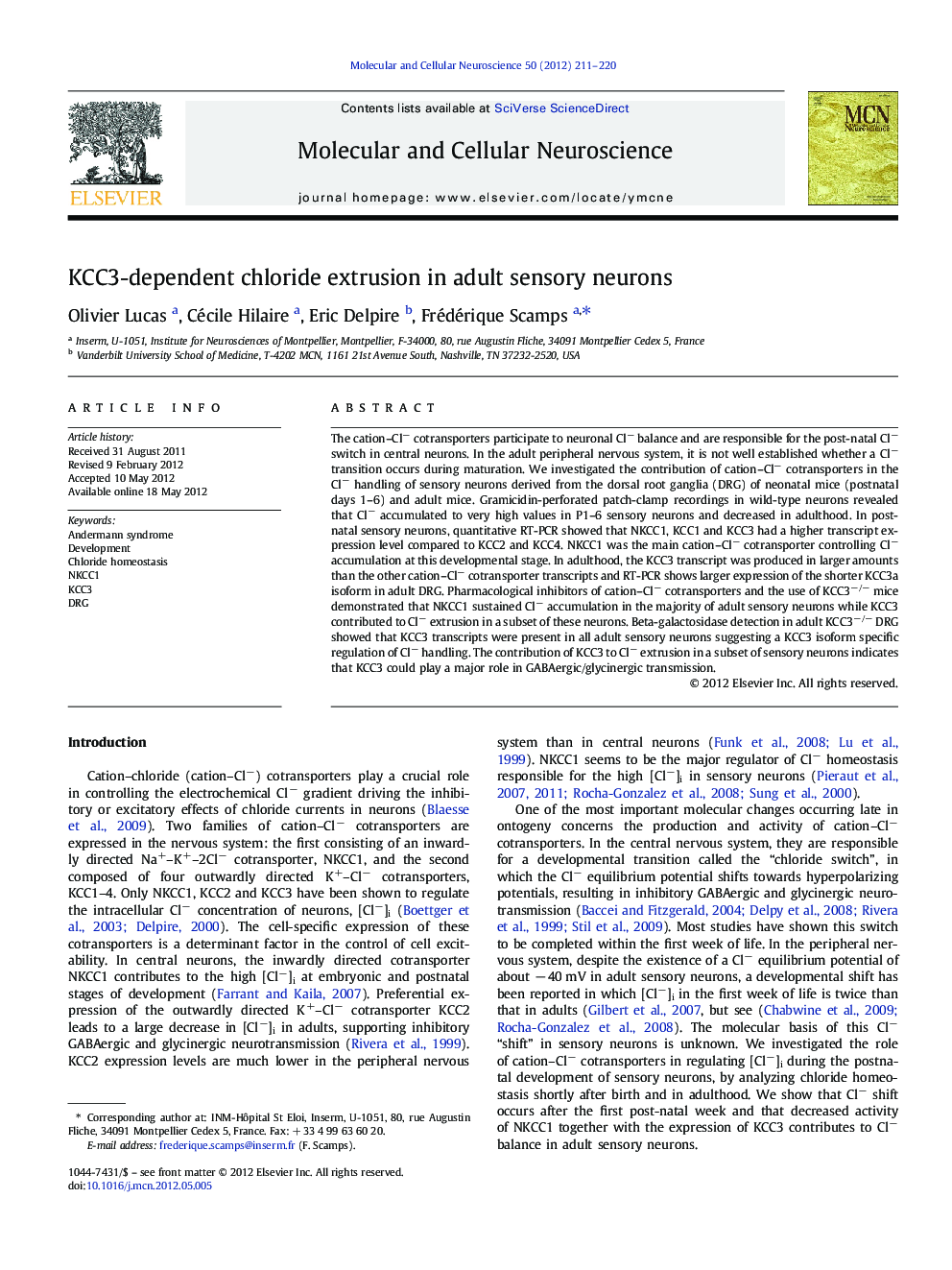| Article ID | Journal | Published Year | Pages | File Type |
|---|---|---|---|---|
| 2198585 | Molecular and Cellular Neuroscience | 2012 | 10 Pages |
The cation–Cl− cotransporters participate to neuronal Cl− balance and are responsible for the post-natal Cl− switch in central neurons. In the adult peripheral nervous system, it is not well established whether a Cl− transition occurs during maturation. We investigated the contribution of cation–Cl− cotransporters in the Cl− handling of sensory neurons derived from the dorsal root ganglia (DRG) of neonatal mice (postnatal days 1–6) and adult mice. Gramicidin-perforated patch-clamp recordings in wild-type neurons revealed that Cl− accumulated to very high values in P1–6 sensory neurons and decreased in adulthood. In post-natal sensory neurons, quantitative RT-PCR showed that NKCC1, KCC1 and KCC3 had a higher transcript expression level compared to KCC2 and KCC4. NKCC1 was the main cation–Cl− cotransporter controlling Cl− accumulation at this developmental stage. In adulthood, the KCC3 transcript was produced in larger amounts than the other cation–Cl− cotransporter transcripts and RT-PCR shows larger expression of the shorter KCC3a isoform in adult DRG. Pharmacological inhibitors of cation–Cl− cotransporters and the use of KCC3−/− mice demonstrated that NKCC1 sustained Cl− accumulation in the majority of adult sensory neurons while KCC3 contributed to Cl− extrusion in a subset of these neurons. Beta-galactosidase detection in adult KCC3−/− DRG showed that KCC3 transcripts were present in all adult sensory neurons suggesting a KCC3 isoform specific regulation of Cl− handling. The contribution of KCC3 to Cl− extrusion in a subset of sensory neurons indicates that KCC3 could play a major role in GABAergic/glycinergic transmission.
